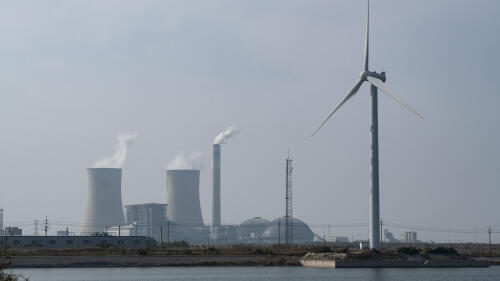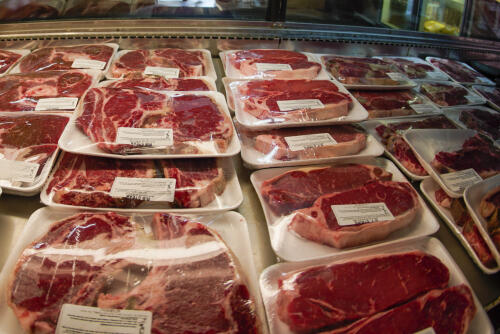Emissions
Food’s role in climate change has emerged as one of the defining challenges of our time. The journey of a steak, fruit or salad from the vast expanses of agricultural lands to the plates on our tables leaves a significant footprint on the environment. As earth, climate and atmospheric scientists, we track global greenhouse gas emissions and just published the most comprehensive assessment yet of a powerful greenhouse gas from food production: nitrous oxide, or N₂O. After carbon dioxide and methane, N₂O is the most consequential greenhouse gas humans are releasing into the atmosphere. While there is less N₂O than carbon dioxide in the atmosphere, it is 300 times more powerful at warming the planet, and it remains in the atmosphere, holding in heat, for over a century. Today, atmospheric N₂O levels are about 25% higher than before the Industrial Revolution, and they’re still rising at an accelerating rate....
Imagine a future with nearly silent air taxis flying above traffic jams and navigating between skyscrapers and suburban droneports. Transportation arrives at the touch of your smartphone and with minimal environmental impact. This isn’t just science fiction. United Airlines has plans for these futuristic electric air taxis in Chicago and New York. The U.S. military is already experimenting with them. And one company has a contract to launch an air taxi service in Dubai as early as 2025. Another company hopes to defy expectations and fly participants at the 2024 Paris Olympics. Backed by billions of dollars in venture capital and established aerospace giants that include Boeing and Airbus, startups across the world such as Joby, Archer, Wisk and Lilium are spearheading this technological revolution, developing electric vertical takeoff and landing (eVTOL) aircraft that could transform the way we travel. Electric aviation promises to alleviate urban congestion, open up rur...
They are supposed to be the climate-savers’ gold standard — the key data on which the world relies in its efforts to lower greenhouse gas emissions and hold global warming in check. But the national inventories of emissions supplied to the United Nations climate convention (UNFCCC) by most countries are anything but reliable, according to a growing body of research. The data supplied to the UNFCCC, and published on its website, are typically out of date, inconsistent, and incomplete. For most countries, “I would not put much value, if any, on the submissions,” says Glen Peters of the Centre for International Climate Research in Norway, a longtime analyst of emissions trends. The data from large emitters is as much open to questions as that from smaller and less industrialised nations. In China, the uncertainties around its carbon dioxide emissions from burning coal are larger than the total emissions of many major industrial coun...
The Environment Agency has lifted the suspension notice it issued to Walleys Quarry landfill site saying it is satisfied the steps required have been completed. Walleys Quarry is no longer prohibited from accepting and disposing of non-inert waste specified in its permit. The Environment Agency said it will now assess the effectiveness of the action taken to reduce fugitive emissions of landfill gas from the areas of the site identified in the Notice. Between 4-10 March, the Environment Agency received 694 odour complaints regarding Walleys Quarry. Aaron Bell, MP for Newcastle-Under-Lyme, criticised the decision and said it was “not welcome” and called on the Environment Agency to close the site. Leader of Newcastle Borough Council Simon Tagg labelled the decision “unbelievable” and echoed Bell’s call for Walleys Quarry to be closed. Walleys Quarry in Newcastle-under-Lyme has been subject to numerous complaints over foul-smelli...
For years, climate scientists have called for a phase-out of fossil fuels to avoid catastrophic global warming. Now, according to a first-of-its-kind survey of more than 200 environmental and agricultural scientists, we must also drastically reduce meat and dairy production — and fast. Global livestock emissions should peak by 2030 or sooner to meet the Paris climate agreement target of limiting the global temperature increase to 1.5 degrees Celsius, the surveyed climate experts said. In high- and middle-income countries, which produce and consume the overwhelming majority of the global meat and dairy supply, livestock emissions should peak much earlier than in low-income countries. “We need to see major changes in livestock production and consumption — really deep and rapid changes over the next decade,” said Helen Harwatt, an environmental social scientist and lead author of the survey repo...




